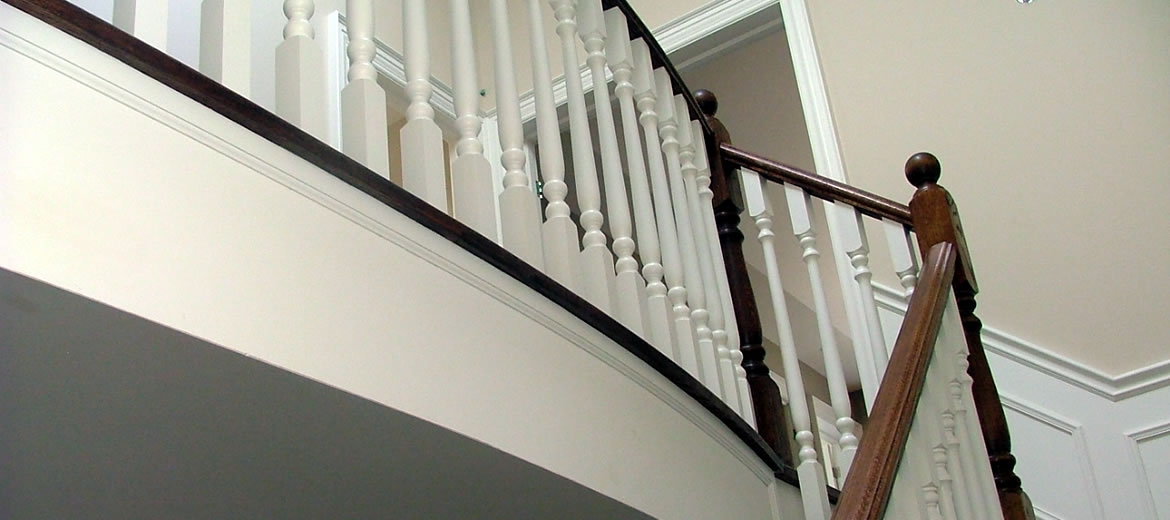Victorian Stairs and Rails ; Features That Make Them Grand
Victorian foyers tended to be rather narrow and long. Despite the frequent space challenges, they managed to fit the most grand stairs and rails in that space.
Victorian Curved Stair
The mark of a Victorian staircase; the huge Victorian starting newels. Victorian newels would have been either turned on a lathe, or (more often) built as an octagon. The amount of detail on these newels just never seemed to end. It can be surprising that an octagon newel can take anywhere from 4 hours to 40 hours to build by hand. The base of a Victorian newel can range in size from 6” to 10”. Many Victorian staircases feature one large starting newel without the use of any other newels as the rail winds upward.
Victorian rails usually went over the top of the newel. The starting newel would likely have a custom made cap which blended the rail into the design of the newel. Perhaps the most beautiful feature of the Victorian rail, was the large hand-carved rail sections that twisted and rose. This feature was needed, due to their lack of newels elsewhere on the stair. Today few stair shops can provide these hand carved rail sections which require a blend of art and science.
Hand Carved Curved Rail
Structurally, Victorian rails were not well designed and loosened up easily, largely due to their lack of newels. Today we use a greater quantity of newels to provide stability to the railing system. Victorian staircases were also built using “hide glue” which was not nearly as strong or long lasting as today’s high tech wood glues. Victorian rails were short – typically around 30” high. Today rake rail height required by code is 34” to 38”. Victorian methods dovetailed the balusters into the treads. This is a good method, but not enough to keep rails stable without newels. Today a good quality stair builder will dowel balusters into the treads, which is just as secure as the dove tail, but more cost effective due to labor time needed for the process.




